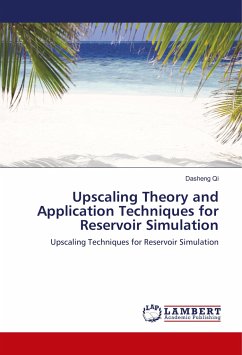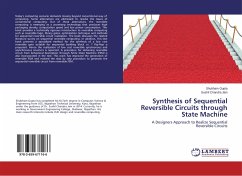
Validation of Steady-state Upscaling
Use of Dimensional Analysis to develop validity criateria for Steady State Upscaling Techniques
Versandkostenfrei!
Versandfertig in 6-10 Tagen
52,99 €
inkl. MwSt.

PAYBACK Punkte
26 °P sammeln!
Steady-state upscaling techniques are quick and simple to implement. They are based on the assumption that either capillary forces (CEL)or viscous forces (VL) dominate flow. However, the reservoir conditions for whichthese assumptions are valid have not been clearly defined. We have used dimensional analysis to identify a comprehensive suite of dimensionlessgroups which can be used to define the validity of steady-state methods. The groupsaccount for the effect of heterogeneity, as well as the other parameters which controlthe balance between capillary and viscous forces. Numerical simulations...
Steady-state upscaling techniques are quick and simple to implement. They are based on the assumption that either capillary forces (CEL)or viscous forces (VL) dominate flow. However, the reservoir conditions for whichthese assumptions are valid have not been clearly defined. We have used dimensional analysis to identify a comprehensive suite of dimensionlessgroups which can be used to define the validity of steady-state methods. The groupsaccount for the effect of heterogeneity, as well as the other parameters which controlthe balance between capillary and viscous forces. Numerical simulations have beenused to identify the range of values for these groups over which steady-state methodsare valid. Our results yield a practical set of quantitative criteria which can be used todetermine the validity of steady-state upscaling methods for a wide range of geologicalmodels.Our criteria demonstrate that steady-state methods can be valid over a broader rangeof flow rates and length scalesthan previously thought.












